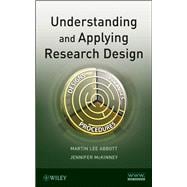
Note: Supplemental materials are not guaranteed with Rental or Used book purchases.
Purchase Benefits
What is included with this book?
MARTIN LEE ABBOTT, PhD, is Professor of Sociology at Seattle Pacific University, where he also serves as Executive Director of the Washington School Research Center. He is the author of The Program Evaluation Prism: Using Statistical Methods to Discover Patterns and Understanding Educational Statistics Using Microsoft Excel® and SPSS®, both from Wiley.
JENNIFER McKINNEY, PhD, is Associate Professor and Co-chair of the Department of Sociology and Director of the Women’s Studies Program at Seattle Pacific University. She publishes articles, makes presentations, and consults on and teaches research design.
How do we know what we know?
‘Duh’ Science
‘Huh Science’
How Does Social Research Actually Work?
EXERCISE: Should Marijuana Be Made Legal?
Terms and Concepts
CHAPTER 2 Theories and Hypotheses
What are theories?
What are Hypotheses?
Operationalizing Variables
EXERCISE: Operationalizing Concepts
Independent and Dependent Variables
Terms and Concepts
CHAPTER 3 Observation and Empirical Generalization
Quantitative Designs
Surveys
Aggregate Data
EXERCISE: Using the Religious Congregations and Membership Study (RCMS)
Experiments
Qualitative Designs
Field Research
Content Analysis
Empirical Generalizations
Correlational versus Causal Relationships
Types of Research
Terms and Concepts
CHAPTER 4 Ethics
Human Subjects Abuses
Protection of Humans in Research
Professional Ethical Standards
Terms and Concepts
CHAPTER 5 Using SPSS® In Research
Real-World data
Coverage of Statistical Procedures
SPSS® Basics
General Features
Using SPSS with GSS Data
CHAPTER 6 Chi Square and Contingency Table Analysis
Contingency Tables
Work Autonomy and Personal Health: An Example of a Contingency Table
Using Chi Square to Determine the Significance of Research Findings
Using SPSS® for the Chi Square Test of Independence
The Crosstabs Procedure
Effect Size: Contingency Coefficient
Effect Size: Phi Coefficient
Effect Size: Cramer’s V
Creating and Analyzing the Contingency Table Data Directly
Terms and Concepts
WHEEL OF SCIENCE: PROCEDURES OF RESEARCH
CHAPTER 7 Learning from Populations: Censuses and Samples
Censuses
Samples
Probability Sampling
Types of Probability Samples
Sampling and Statistics
Potential Biases in Probability Samples
Non-probability "Samples"
Exercise: Populations and Sampling
Terms and Concepts
CHAPTER 8 Measurement
Variables and Constants
Operationalization
Variation
Constants
Levels of Measurement
Exercise: Levels of Measurement
Units of Analysis
Reliability and Validity of Measures
Terms and Concepts
CHAPTER 9 Correlation
The Nature of Correlation: Explore and Predict
Different Measurement Values
Correlation Measures
Interpreting the Pearson’s Correlation
An example of Correlation
Assumptions for Correlation
Plotting the Correlation: The Scattergram
Patterns of Correlations
Creating the Scattergram
Evaluating Pearson’s r
Correlation Using SPSS®
Interpreting r: Effect Size
Correlation Influences
Correlation is Not Causation
An Example of Correlation
Non Parametric Statistics
Terms and Concepts
CHAPTER 10 Regression
Understanding Regression through Correlation
Regression Models
Using SPSS to Understand Regression
Interpreting Multiple Regression: The Combined, Omnibus, Findings
Interpreting Multiple Regression: The Individual Predictor Findings
Using MLR to Establish Causality
Using MLR with Categorical Data
Terms and Concepts
CHAPTER 11 Causation
Criteria for Causation
Using ‘Control’ Variables to Detect Spuriousness
Intervening Variables
Regression Analysis and Testing for Spuriousness
Exercise: Testing Spuriousness in Crosstabs
Exercise: Testing for Spuriousness in Regression
Terms and Concepts
WHEEL OF SCIENCE: DESIGNS OF RESEARCH
CHAPTER 12 Survey Research
Nature of The Survey
Interviews
Telephone Interviews
Questionnaires
Online Survey Methods
Online Forums
Survey Item Construction
Using Time in Survey Studies
Exercise: Survey Research in Action
Ghosts, UFOs, and Other Paranormal Beliefs
Terms and Concepts
CHAPTER 13 Aggregate Research
Nature of Aggregate Data
Areal and Social Units
Exercise: Putting It Together
Exercise: Exploring Congregations In America
Terms and Concepts
CHAPTER 14 Experiments
Experimental Designs
Pre-experimental Designs
True Experimental Designs
Quasi-Experimental Designs
Experimental settings
Ethics
Exercise: Experiments in Action
Terms and Concepts
CHAPTER 15 Statistical Methods of Difference - T Test
Independent and Dependent Samples
Independent T Test
Independent T Test: The Procedure
Independent T Test Example
Terms and Concepts
CHAPTER 16 Analysis of Variance
The Nature of the ANOVA Design
The Components of Variance
The Process of ANOVA
Calculating ANOVA
Effect Size
Post Hoc Analyses
Assumptions of ANOVA
Additional Considerations with ANOVA
A Real World Example of ANOVA
Using SPSS for ANOVA Procedures
SPSS ANOVA Results for the Example Study
SPSS Procedures with One Way ANOVA
Terms and Concepts
CHAPTER 17 Field Research
Selecting a Topic
Entering the Field
What Happens in the Field?
Reliability
Ethical Concerns
Exercise: Field Research in Action
Terms and Concepts
CHAPTER 18 Content Analysis
Defining the Population
Census or Sample?
Coding in Content Analysis
Coding Rolling Stone
Reliability and Validity
Exercise: Content Analysis of Popular Magazines
Terms and Concepts
Statistical Procedures Unit A: Writing the Statistical Research Summary
Statistical Procedures Unit B: The Nature of Inferential Statistics
Probability
Probability, the Normal Curve, and ‘P Values’
Populations (Parameters) and Samples (Statistics)
The Hypothesis Test
Inferential Statistics Terms and Concepts
Data Management Unit A: Use and Functions of SPSS
Management Functions
Additional Management Functions
Analysis Functions
Data Management Unit A: Terms and Concepts
Data Management Unit B: Using SPSS to Recode for T Test
Using SPSS to Recode Questionnaire Items
Data Management Unit B: Terms and Concepts
Data Management Unit C: Descriptive Statistics
Descriptive and Inferential Statistics
Descriptive Statistics
Descriptive Procedures for Nominal and Ordinal Data
Descriptive Procedures for Interval Data
Obtaining Descriptive (Numerical) Statistics from SPSS®
Obtaining Descriptive (Visual) Statistics from SPSS®
Data Management Unit C: Terms and Concepts
Statistical Procedures Unit C: Z Scores
The Nature of the Normal Curve
The Standard Normal Score: z score
Calculating z Scores
Using SPSS® to Create z Scores
Terms and Concepts
Glossary
Bibliography
The New copy of this book will include any supplemental materials advertised. Please check the title of the book to determine if it should include any access cards, study guides, lab manuals, CDs, etc.
The Used, Rental and eBook copies of this book are not guaranteed to include any supplemental materials. Typically, only the book itself is included. This is true even if the title states it includes any access cards, study guides, lab manuals, CDs, etc.